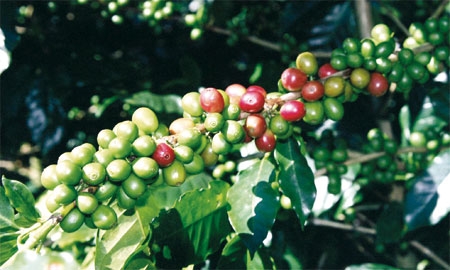Historically, Costa Rica has long been an agro economy, growing produce to feed its population and exporting just a relatively small amount. However, over the past 25 years, Costa Rica first expanded its exports and then developed its manufacturing and service sectors. It has signed a series of trade agreements and has turned into one of the biggest exporters per capita in Latin America.
“Exports have always been a key activity in the Costa Rican economy, but it was not until the mid-80s when we finally made it onto the world stage and diversified our exports and markets,” says Gloria Abraham, Minister of Agriculture and Livestock. “After having established ourselves in international markets, a large number of sectors started coming to Costa Rica to take advantage of the security, peace and democracy that prevails here today, in addition to the progress made in terms of human capital here, which comes from investing over of the past 100 years in the training of adaptable employees for sophisticated companies.”
Boosted by foreign investment in Costa Rica's free trade zone, manufacturing and industry's contribution to GDP overtook that of agriculture in the 1990s. Nevertheless, the agriculture, livestock and fishery sector still remains important for the country, contributing around 6.4% of GDP and employing 14% of the workforce.
“One element that stands out is that Costa Rica is not a country of large estate owners as there are no huge plantations,” says Ms. Abraham. “In fact we have a huge focus on small and medium landowners. In the case of coffee, 92% of production is in the hands of producers who have less than two hectares.”
Coffee is grown primarily in the central valley, from San Ramon to Turrialba, which is a large valley divided into small farms, and farmers organize themselves into cooperatives to enable them to make purchases and sales at the collective level.
“Costa Rica’s coffee has reached prices of US$1200 for a quintal of 46 kilos, against an average of US$300 last year,” says Alfio Piva Mesen, First Vice President of Costa Rica. “So how does Costa Rica manage to reach US$1200? With quality coffee, selling to gourmet buyers, and organizing fairs where it is produced, showing how and where organic coffee is made with traditional manufacturing methods, and with CO2 neutral emissions.”
Ms. Abraham says, “What many people do not realize is that in Costa Rica, unlike in many countries, to live or work in the countryside is not synonymous with poverty. Generally in Latin America, when you leave a town and travel to another, along the route you can find long stretches of poverty. We are proud that in our case this is not true.”
Exports of fresh fruit are also very important to the country’s agriculture sector. Leading U.S.-based companies such as Del Monte,
Dole and Chiquita are all heavily involved in Costa Rica.
Bananas are the country’s top agricultural export. Costa Rican bananas are now to be labeled with a seal denoting their origin by the National Banana Corporation, which hopes the seal will promote the idea that the bananas are cultivated in a socially responsible and ethical manner.
Costa Rica is the first export country in Central America and the second in Latin America to have this country-of-origin marking.
According to the Ministry of Foreign Trade, the designation should help market Costa Rican bananas in the EU, where research suggests that up to 40% of consumers are willing to pay up to 10% more for products with their origins identified.
Pineapple production started in Costa Rica in the 1980s and the fruit surpassed coffee as the number two agricultural export. Demand in the U.S. and Europe has grown rapidly and so Costa Rica is using more and more land each year for its cultivation.
The nation’s other agricultural products include melons, ornamental plants, sugar, corn, rice, beans, potatoes, beef, poultry, dairy and timber.
The Ministry of Agriculture and Livestock has launched the National Agricultural Plan 2010-2021, which is based on three basic areas: competitiveness, management of rural areas, and innovation and development. It also believes that government and industry must work together to improve efficiency and raise competitiveness in the sector.

0 COMMENTS